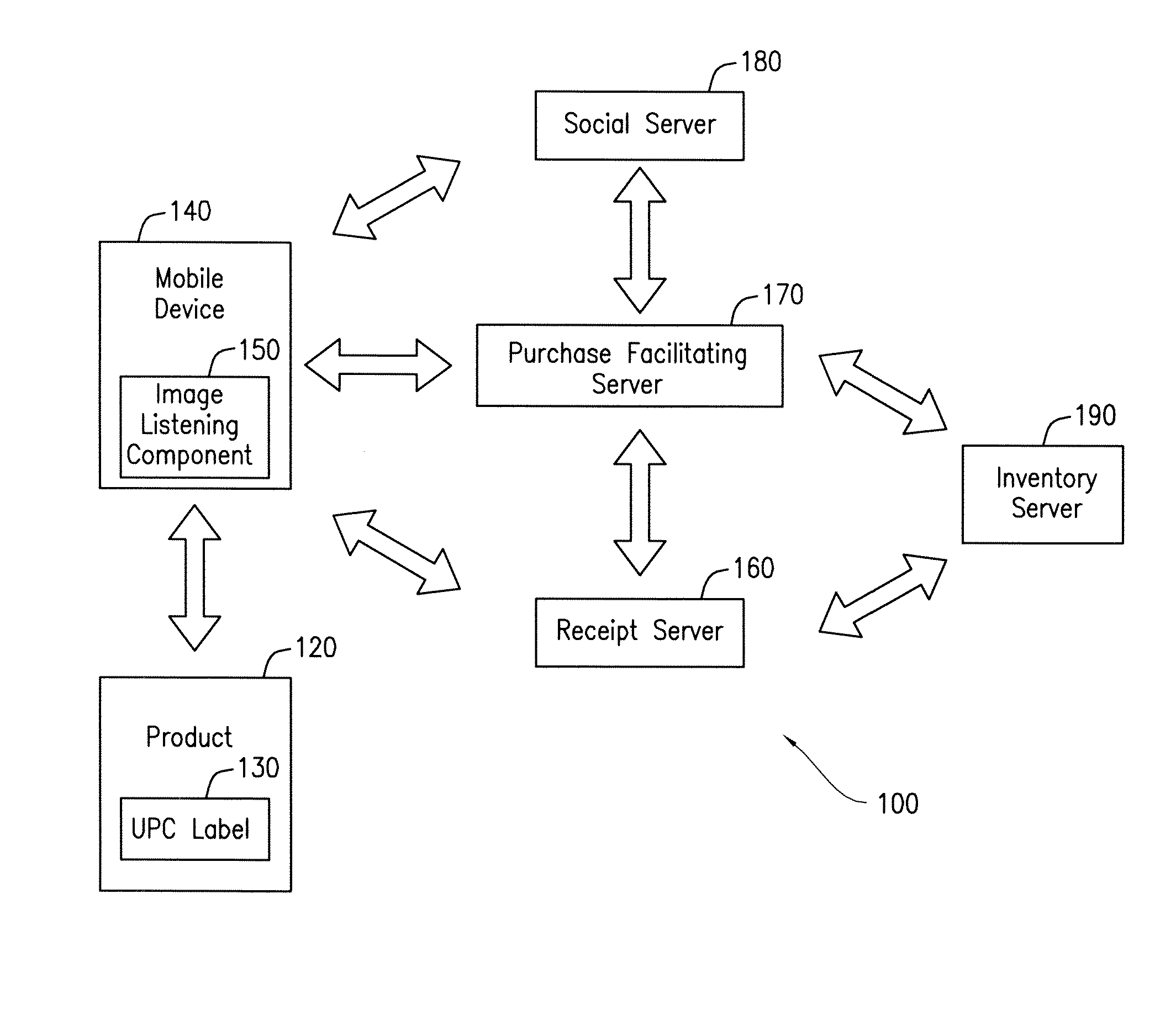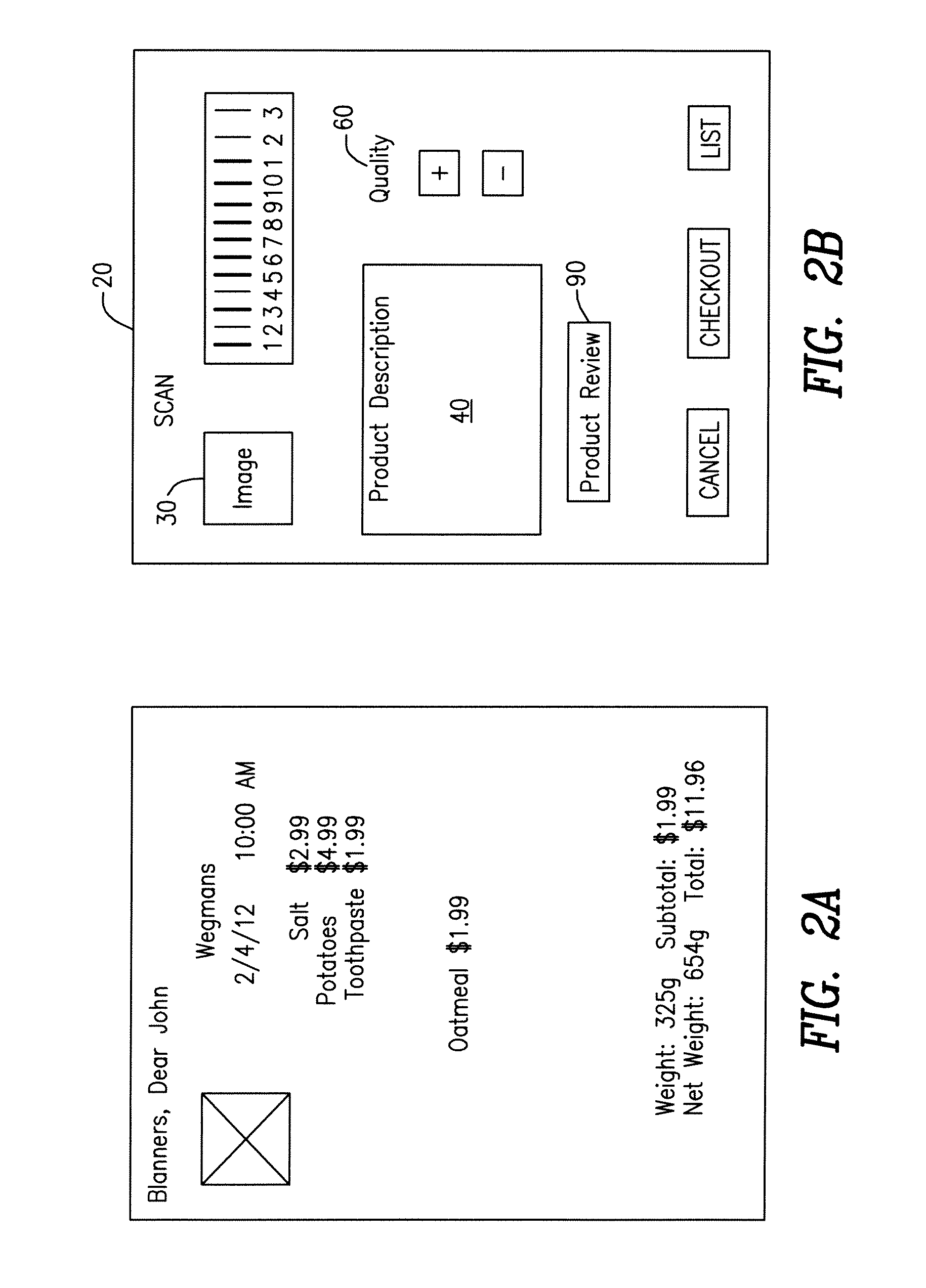Customer service was limited to retail associates directing consumers through the store, or helping when asked.
The entire retail experience was alienating, discursive and often confusing.
Previously, the art related to improving and accelerating the in-store shopping and
payment process was limited and cumbersome, operating on hand-held scanners, or mobile applications that compare and manage shopping lists for
consumables such as groceries, office supplies, home accessories, gardening supplies, etc.
Searching for a specific consumable was time-consuming, and difficult, since retail associates are often limited in their ability to aid consumers according to supply and demand.
Many of the systems involved in accelerating the checkout process conflated different processes, such as price comparisons, shopping
list management, discount notification, and
payment recognition, without satisfactorily improving the consumer's wait time while shopping.
The prior art was inflexible, inadaptable and worked only in immediate and complete implementation.
Moreover, while the prior art gave the user a new method for
payment and waiting, it did not function as a stand alone product, distributed application, and networked solution; instead it solved only one of these important inseparable aspects, functioning in a specific and fragmented niche particular to one retailer, or one mobile
software, or in one service.
Those prior arts that did attempt more, often confused and dissuaded the consumer from continued use through
interfacing, excessive features, commercial effort, or lack of positive benefits.
From the retailer's perspective, these prior arts left every aspect of the shopping experience in the hands of the consumer, thus making them even more difficult to implement quickly and across broad channels.
None of the prior art was attractive to both retailers and consumers, nor did it confront the underlying existing problem in the retail market; namely, that of how to improve the retail shopping experience.
None of the prior art, however, focused on wholly changing the retail process through an all-inclusive app that included shopping, social and map-based features.
Much of the prior art targeted only one or two of these aspects, ineffectually changing the face of retail, instead facilitating smaller, more incremental processes, such as the finding of coupons, the virtual mapping of friends, or the scanning of a product to find out more about it.
The shortcomings in the prior art inventions result from their inability to understand the primary consumer problem; namely, that of inconvenience while shopping, as well as secondary problems which relate to the retailer and presentation of a mobile shopping application.
The prior art offers too many features at once, such as price comparisons, geo-location, discount notifications, and other gimmicks, without offering incentive for consumers to continue using the app instead of returning to their original shopping methods.
Software limitations have also been an issue, forcing consumers to learn a new system in a technologically incipient realm.
As a result, much of the prior art has been too complicated for consumers to want to use again.
The prior art distracts consumers with
peripheral features without offering the preferred evolutionary step in the mobile shopping industry toward a holistic mobile shopping approach.
But consumers are reluctant to test a new technology without a clear
reward system or special discount for using the new method.
As a result, the prior art has been slow to catch on in the mobile shopping industry.
Without a rewards system the prior art struggles to attract and retain customers, since there is no incentive for continued use.
For retailers, prior art lacks the retail tools and information that make a third-party rewards system beneficial and worthwhile.
There is no way to follow other users, link profiles or share accounts.
In short the prior art fails to provide what acts as a driving motivator for many consumers: fun.
The prior art ignores retailers for the sake of consumers, without determining how such a system could become standard in a larger operation both in terms of cost and convenience to retailers.
The prior art is deficient because it provides insufficient attention to how retailers catalog and manage their inventory.
Much of the prior art also fails to integrate a notification and
reward system to notify retailers when preferred customers enter the store or location, lacking the high customer service so many customers desire.
Prior art fails to offer a seamless transfer to new technology, either moving from cashier checkout to mobile checkout directly or incompletely.
The prior art also does not take into account the different possible methods by which an item can be bought—UPC codes.
Some prior art works to provide checkout at point of purchase, but fails to expedite how the consumer reaches that point of purchase.
The prior art is limited to a specific mobile network or platform and often fails to work within a certain range.
The result takes liberties in exploiting users' privacy.
None of the prior art keeps consumer's privacy intact without profiling the consumer, while working to help the consumer and expedite the shopping process.
Much of the prior art burdens the customer with an extra tool or substitutes a new step in place of an old one, while making no great improvement in the consumer's sense of
power over the technology or the consumable.
 Login to View More
Login to View More  Login to View More
Login to View More 


